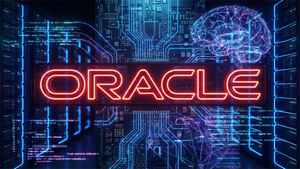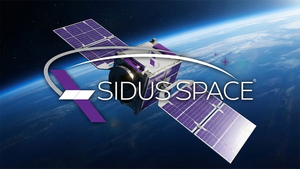
Tesla's current trajectory reveals a company strategically recalibrating its future, shifting its emphasis from solely an electric vehicle (EV) manufacturer to a diversified technology and energy powerhouse. This pivotal move involves aggressive expansion into artificial intelligence (AI), particularly through its Optimus humanoid robot and Full Self-Driving (FSD) initiatives, alongside a robust commitment to energy solutions. This dual-path approach is designed to balance the immense growth potential in these advanced sectors with the increasing challenges and competitive pressures within the traditional EV market, offering a multifaceted outlook for investors and industry observers alike.
Tesla's Pivotal Shift: AI and Energy Take Center Stage
Tesla (NASDAQ: TSLA) is embarking on a significant strategic pivot, recognizing that while its automotive division remains foundational, its future valuation will be increasingly driven by its ventures in AI and sustainable energy. This shift is encapsulated in what CEO Elon Musk has termed "Master Plan Part Four," which prioritizes AI, robotics, and energy storage over a relentless focus on new traditional EV models.
The company's AI ambitions are spearheaded by two transformative projects: Full Self-Driving (FSD) technology and the Optimus humanoid robot. FSD, currently a Level 2 Advanced Driver-Assistance System, is Tesla's vision-based system aiming for full autonomy. The company is pushing for unsupervised FSD in the U.S. and most countries by late 2026 and has begun piloting Robotaxi services in Austin and San Francisco using Model Y vehicles. Musk believes Optimus, a general-purpose, bi-pedal robot, could eventually represent 80% of Tesla's future value, with mass production targeted for late 2025 and ambitious output goals of 1.2 million units annually within five years, potentially generating $30 billion in revenue by the late 2030s.
Concurrently, Tesla's energy generation and storage division, encompassing Powerwall for residential use, Megapack for utility-scale applications, and solar solutions, is experiencing remarkable growth. This segment saw a 67% revenue increase in 2024, driven by record deployments of 31.4 GWh of battery energy storage. The energy division's gross margins, at 24.6% in Q1 2024, have surpassed those of the automotive segment, underscoring its profitability and strategic importance in stabilizing power grids and accelerating the global transition to sustainable energy. Tesla's Autobidder software, an AI-driven platform, further optimizes these energy systems.
However, this aggressive push into new frontiers comes amidst significant headwinds in its core EV business. Tesla's U.S. EV market share has fallen to 38% in August 2025, its lowest since 2017, due to intensifying competition from both legacy automakers (e.g., General Motors (NYSE: GM), Ford (NYSE: F), Volkswagen (FWB: VOW)) and new entrants, particularly aggressive Chinese manufacturers like BYD (HKG: 1211). This increased competition has led to multiple price cuts, contracting Tesla's gross margins to 17.48% in 2025. An aging product lineup, supply chain vulnerabilities, evolving regulatory landscapes, and ongoing quality concerns further complicate its automotive outlook. This strategic overview matters profoundly as it signals Tesla's attempt to de-risk its future by leveraging its technological prowess in areas with potentially higher margins and broader societal impact, while simultaneously addressing the maturing dynamics of the EV market.
Winners and Losers in the Wake of Tesla's Strategic Shift
Tesla's audacious dual strategy, prioritizing AI and energy while navigating a turbulent EV market, is creating a ripple effect across numerous industries, delineating clear winners and losers among competitors, suppliers, and related tech and energy sectors. This strategic pivot, away from solely vehicle sales towards high-margin software and energy solutions, reshapes market dynamics.
On the winning side, companies specializing in AI-powered hardware and general-purpose AI are poised for substantial gains. NVIDIA (NASDAQ: NVDA), a dominant force in AI GPUs and the DRIVE platform, is a primary beneficiary, as its technology is crucial for training and deploying advanced AI models like those used in FSD and robotics. Qualcomm (NASDAQ: QCOM) with its Snapdragon Ride platform also stands to gain from supplying chips for diverse automotive AI applications. Samsung (KRX: 005930) recently secured a significant deal to produce Tesla's next-generation AI6 automotive chips, cementing its role as a key supplier. While still niche, advanced robotics firms like Boston Dynamics (owned by Hyundai Motor Group (KRX: 005380)) could see increased investment and collaboration as the general-purpose robotics market expands, driven by Tesla's Optimus ambitions.
In the energy sector, Tesla's aggressive expansion directly benefits major battery suppliers. CATL (SHE: 300750) and LG Energy Solution (KRX: 373220), already prominent suppliers for Tesla, will likely see increased demand for their advanced battery cells as Powerwall and Megapack deployments surge. Panasonic (TYO: 6752), Tesla's longstanding battery partner, also remains crucial. Companies like Fluence (NASDAQ: FLNC), specializing in grid-scale energy storage systems, are well-positioned to benefit from the overall market validation and expansion spurred by Tesla's Megapack business. Raw material suppliers for batteries, such as Ganfeng Lithium (SHE: 002460) and Arcadium Lithium (NYSE: ALTM) for lithium, and BHP (ASX: BHP) for nickel, will also see sustained high demand.
Conversely, several entities face potential setbacks. Traditional EV manufacturers, especially legacy automakers like General Motors (NYSE: GM), Ford (NYSE: F), and Volkswagen (FWB: VOW), without robust AI and energy pivots, are at risk. They are already contending with intense price wars and an aging core EV market, and if Tesla successfully monetizes FSD as a robotaxi service and deploys Optimus at scale, it could fundamentally alter the economics of transportation and labor, leaving slower-moving incumbents behind. EV startups like Rivian (NASDAQ: RIVN) and Lucid Motors (NASDAQ: LCID), primarily focused on premium EVs, may find it increasingly difficult to compete on price and technological diversification against a Tesla that is generating revenue beyond just vehicle sales.
Direct competitors in autonomous driving, such as Waymo (owned by Alphabet (NASDAQ: GOOGL)) and Cruise (owned by General Motors (NYSE: GM)), could face intensified competition if Tesla's FSD and Robotaxi initiatives gain widespread adoption and regulatory approval. Smaller AI/robotics startups, without Tesla's scale or vertical integration, might struggle to compete with Optimus's potential for mass production. Traditional automotive suppliers focused solely on internal combustion engine (ICE) vehicles or less advanced EV components will continue to face declining demand, necessitating rapid adaptation to meet the demands of advanced, AI-driven automotive systems.
Industry Impact and Broader Implications of Tesla's Dual Path
Tesla's dual strategy extends its influence far beyond the automotive sector, signaling profound shifts across the technology, energy, and broader industrial landscapes. By aiming to transform into an "AI and robotics company" with an integrated energy arm, Tesla (NASDAQ: TSLA) is not just adapting to market trends but actively shaping them, forcing established players to recalibrate their strategies.
Within the automotive industry, Tesla's push into Level 4 autonomous driving through FSD and its Robotaxi ambitions is driving a convergence of vehicle manufacturing with advanced AI. This necessitates that other automakers, including legacy players like Toyota (NYSE: TM), Hyundai (KRX: 005380), and BMW (FWB: BMW), accelerate their own AI, software integration, and charging infrastructure efforts. The potential for ubiquitous robotaxi networks threatens to revolutionize traditional car ownership and ride-sharing models, prompting players like Uber (NYSE: UBER) and Lyft (NASDAQ: LYFT) to consider their future in an autonomous world. This also means a greater focus on high-margin software and services revenue, a model Tesla pioneered.
In the technology sector, Tesla is positioning itself as a leading AI and robotics innovator. Its immense dataset from its vehicle fleet provides a significant advantage for training AI models, fostering advancements not only in FSD but also in the development of Optimus. If successful, Optimus could unlock entirely new markets in manufacturing, logistics, healthcare, and even domestic services, creating an unprecedented demand for general-purpose humanoid robots. This could compel tech giants and industrial robotics firms like FANUC (TYO: 6954) and ABB (SWX: ABBN) to integrate more sophisticated AI and develop more versatile, human-like robots. Tesla's use of AI to optimize its Gigafactory manufacturing processes also sets a new benchmark for industrial efficiency and automation.
The energy sector is experiencing a significant uplift from Tesla's (NASDAQ: TSLA) expanding energy solutions. The Powerwall and Megapack systems are critical for integrating intermittent renewable energy sources, such as solar and wind power, into grids globally. Megapacks are increasingly replacing expensive and polluting natural gas peaker plants, essential for grid stability. The development of virtual power plants (VPPs) via connected Powerwalls transforms homeowners into active participants in decentralized energy networks, potentially turning Tesla into a major global green distributed energy supplier. This trend is further amplified by the immense power demands of the AI boom, which necessitates robust, stable, and sustainable energy infrastructure, directly benefiting Tesla's Megapack business.
From a regulatory and policy perspective, Tesla's advancements raise complex questions. For autonomous driving, bodies like the National Highway Traffic Safety Administration (NHTSA) are intensifying scrutiny, pushing for clearer safety standards and liability frameworks. The absence of a unified federal regulatory framework in the U.S. and stricter rules in the E.U. create a fragmented operating environment. The advent of humanoid robots like Optimus introduces entirely new regulatory and ethical dilemmas concerning job displacement, workplace safety, data privacy, and the long-term societal impact of intelligent machines, necessitating proactive government responses. Furthermore, trade tariffs on battery components, especially from China, and evolving battery recycling regulations, significantly impact Tesla's energy supply chain and operational costs.
Historically, Tesla's vertically integrated and disruptive approach draws parallels to Henry Ford's mass production of the Model T, which democratized automotive travel. Just as early tech giants like Amazon (NASDAQ: AMZN) prioritized growth and infrastructure over immediate profitability to establish foundational advantages, Tesla is making heavy investments in AI and robotics with a long-term vision. This strategy, while high-stakes, aims to position Tesla as a diversified technology behemoth, fundamentally reshaping multiple industries simultaneously.
What Comes Next for Tesla's Dual Path Strategy
Tesla's (NASDAQ: TSLA) trajectory in the coming months and years will be a complex interplay of executing its ambitious AI and energy strategies while deftly navigating the ongoing challenges in its core EV business. The short-term will likely see a continued push on FSD and energy, while the long-term vision of AI-driven dominance remains a high-stakes gamble.
In the short-term, investors should anticipate a strong focus on enhancing Full Self-Driving (FSD) capabilities and expanding the Robotaxi pilot programs. Tesla aims for unsupervised FSD functionality by mid-2025, with a broader rollout of Robotaxi services beyond Austin and San Francisco by year-end, which could generate immediate, recurring software revenue through its $99/month subscription model. However, the Optimus humanoid robot project, while visionary, is lagging, with production significantly behind schedule and mass deployment still several years away due to technical hurdles like battery life and mechanical dexterity. Conversely, the energy division is poised for continued robust growth, with revenues projected to double to $18 billion by 2026, driven by strong demand for Megapack batteries and strategic partnerships with AI data centers hungry for reliable power. Tesla is also expected to introduce more affordable EV models in early 2025 to address softening demand and intensifying competition.
Looking into the long-term, Tesla envisions a global, pervasive robotaxi network fundamentally disrupting traditional transportation, potentially driving 45% of its automotive sales by 2030 and capturing a significant share of a trillion-dollar market. Optimus, despite current delays, is projected by Elon Musk to account for up to 80% of Tesla's valuation by creating an entirely new economy around general-purpose humanoid robots across various sectors. The energy segment is targeting 1,500 GWh of storage deployment annually by 2030, solidifying its role in global grid stability and renewable energy integration, potentially contributing 30% of Tesla's revenue by 2035.
Potential strategic pivots include a continued re-prioritization away from solely aggressive EV sales targets towards a stronger emphasis on FSD and robotaxis, potentially even adjusting the ambitious "20 million vehicles by 2030" goal. Tesla has also demonstrated a pivot in its AI hardware strategy, moving from an exclusive in-house approach (Dojo supercomputer) to strategic partnerships with companies like NVIDIA (NASDAQ: NVDA), AMD (NASDAQ: AMD), and Samsung (KRX: 005930) for its AI compute infrastructure, emphasizing speed and flexibility. Further expansions of AI applications beyond FSD and Optimus into enhancing energy storage and potentially licensing its AI insights to other industries are also possibilities.
Market opportunities include tapping into largely unexploited trillion-dollar markets in autonomous ride-hailing and humanoid robotics, leveraging its technological leadership in "physical AI," and benefiting from its integrated ecosystem of EVs, energy storage, and AI. However, challenges abound: intense competition in the EV and autonomous vehicle markets, significant regulatory and safety hurdles for FSD and Optimus, macroeconomic headwinds impacting consumer demand, and high execution risk associated with ambitious timelines and R&D costs. Tesla's valuation currently demands consistent execution, and any significant misses could impact investor confidence.
The most likely scenario is a phased transformation where Tesla effectively balances its significant investments in AI and robotics with the need to stabilize and reinvigorate its automotive segment. This would entail a gradual, geographically limited rollout of FSD and robotaxi services, generating meaningful recurring software revenue, while Optimus remains a promising long-term development. The energy segment will continue its robust growth, providing crucial cash flow and diversification. Tesla's future hinges on its ability to effectively manage current automotive challenges while successfully executing its ambitious AI and energy strategies, navigating a complex landscape of competition, regulation, and technological development.
Conclusion: Tesla's Dual Horizon
Tesla (NASDAQ: TSLA) stands at a defining moment, skillfully recalibrating its identity from a pioneering electric vehicle (EV) manufacturer to an integrated Artificial Intelligence (AI) and clean energy powerhouse. This bold dual-path strategy, driven by ambitious ventures in AI through its Full Self-Driving (FSD) and Optimus robot initiatives, alongside its rapidly expanding energy solutions, is not merely an evolutionary step but a calculated pivot designed to de-risk its future amidst an increasingly competitive and maturing EV market.
The key takeaways are clear: AI and robotics are positioned as Tesla's primary growth engines, promising to unlock multi-trillion-dollar opportunities in autonomous transportation and automated industries. Concurrently, the energy generation and storage division, marked by impressive growth in Powerwall and Megapack deployments and superior gross margins, serves as a robust, stabilizing force and a significant revenue diversifier. While these future-forward initiatives hold immense promise, Tesla must concurrently navigate intensified competition, pricing pressures, and regulatory scrutiny in its foundational automotive business, where its market share has seen recent declines.
Assessing the market moving forward, it's evident that investor perception of Tesla is broadening beyond traditional automotive metrics. The market is increasingly valuing the company based on its long-term potential in autonomous driving, humanoid robotics, and advanced AI. This diversification strategy provides a crucial hedge, preserving capital and reducing investment risks by offering a wider market reach. The energy sector, particularly grid-scale storage, is projected for continued rapid ascent, with Tesla aiming for massive Megapack production by 2026, solidifying its role in global grid stability and providing critical infrastructure for energy-intensive AI data centers. However, near-term profitability might be constrained by substantial capital expenditures in these nascent AI and robotics ventures, underscoring the delicate balance Tesla must maintain between innovation and financial performance.
The significance and lasting impact of Tesla's strategy cannot be overstated. It signals a paradigm shift in the tech industry: the convergence of cutting-edge AI with tangible physical products and essential infrastructure. Tesla's vision of "physical AI" through FSD and Optimus aims to disrupt entire sectors, from transportation and logistics to manufacturing and service industries. Combined with its robust energy solutions, this approach positions Tesla as a foundational contributor to a future powered by clean energy and intelligent automation, potentially redefining industrial paradigms and integrating AI into the very fabric of daily life.
For investors in the coming months, a nuanced perspective is paramount. While current analyst consensus leans towards a "Hold" rating on Tesla (NASDAQ: TSLA) stock, the focus has unequivocally shifted. What to watch for:
- AI Progress and Monetization: Monitor concrete milestones for FSD adoption, the successful scaling of Robotaxi services, and tangible progress in Optimus production targets and initial deployments.
- Energy Segment Performance: Observe Megapack deployment numbers, new strategic partnerships with utilities or data centers, and the sustained high gross margins of the energy division, which will be critical for overall financial stability.
- Automotive Market Adaptation: Look for Tesla's strategies to combat intensifying competition, including any new, more affordable EV models, cost rationalization efforts, and improvements in operating margins within the automotive segment.
- Supply Chain Diversification: Pay attention to Tesla's efforts to mitigate geopolitical risks by diversifying its supply chains outside of regions like China and Taiwan.
- Regulatory Developments: Keep a close eye on evolving regulatory frameworks for autonomous driving and energy storage, as these can significantly influence market opportunities and operational costs.
In essence, Tesla's narrative is now far broader than just electric cars. While the automotive sector presents immediate headwinds, the long-term investment thesis is increasingly predicated on the successful execution and monetization of its ambitious AI and energy ventures. Tangible progress in these areas will be the primary drivers of future value creation and will dictate Tesla's lasting impact on the global economy.




